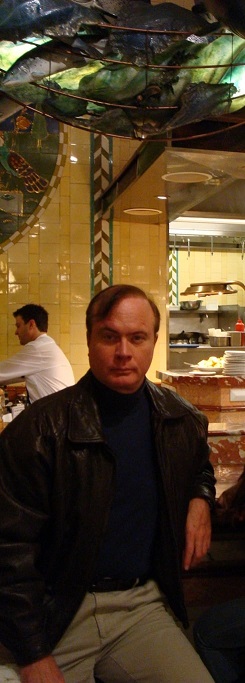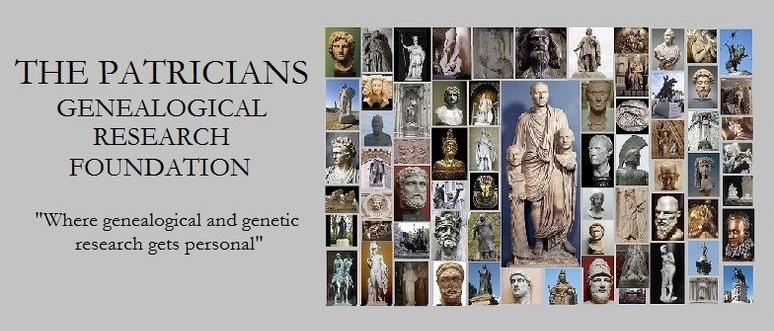





Armorial of the Royal House of Plantagenet


“… the very first of [the Plantagenet] name and race, and the very greatest King that England ever knew, but withal the most unfortunate … his death being imputed to those only to whom himself had given life, his ungracious sons…” — Sir Winston Churchill (1620-1688)
Three weeks after Henry “Beauclerc” I (1068 – 1135) died, Stephen IV de Blois , his nephew, had himself elected and crowned to succeed him as King of England. Empress Matilda, who had a rival claim to the throne as Henry’s daughter, was in France at the time. Upon her return to England, she waged a bloody 18-year civil war, called The Anarchy, against Stephen to depose him. Her son Henry d’Anjou (later King Henry II Plantagenet) finally wore down Stephen’s characteristically irresolute will to continue the fight following a series of battles and skirmishes that resulted in his suing for peace, essentially formally designating Henry as his adopted son and heir to the throne in 1153 (Stephen died the next year).
As heinously dreadful as it was in English history, The Anarchy not only resulted in Henry’s kingship but also laid down the formation of the basis for his front-line autocratic leadership and control of earldoms both Stephen and Matilda created during that time. His rulership was thus greatly enhanced by this ancillary favorable development as a result since their earls were at his beck and call from the moment he was crowned as their liege lord.
The coronation of Angevin empire magnate Henry II Plantagenet in 1154 as King of England marked the beginning of the Plantagenet monarchal dynasty and its cadet branches that would rule England for the next 331 years.
As a couple, Henry and Eleanor of Aquitaine shook the firmament of European royalty to such an extent that they, as most historians would agree, changed the course of history.
During his reign as King of England, he regained and solidified his control of the French domains (Angevin) he inherited from his grandfather. He also subjugated large parts of Scotland, Wales, Brittany, and Ireland to his rulership.
As a measure of the king’s boundless imperialistic ambition, he belated stepped into the fray after Richard “Strongbow” de Clare, Earl of Pembroke (1130 – 1176) Justiciar of Ireland conquered substantial regions of southeastern Ireland (most of which was principally ruled, such as Dublin, by Normans several centuries before). He initially passed on the involvement when Leinster King Diarmaid mac Murchadha (a.k.a, Dermot, 1110 – 1171), Strongbow’s father-in-law, implored him to assist him in reestablishing his kingship after being deposed by Irish High King Ruaidrí Ua Conchobair (a.k.a. Rory, 1116 – 1198). (Both Dermot and Rory were agnatic descendants of Irish High King Niall of 9 Hostages (380 – 454).) Seizing the opportunity to take advantage of Strongbow’s victory, he sent a full-scale army to claim more than bragging rights as Lord of Ireland thereafter.
* * *
“Will no one rid me of this turbulent priest?”
– HRH Henry II “Curtmantle” Plantagenet
Those rash words, spoken in frustration with the longstanding Thomas à Becket‘s opposition to Henry’s agenda to gain control of the church, were mistaken as a royal command by four zealous young knights in his presence at the time. Reginald Fitz Urse, Hugh de Morville, William de Tracy, and Richard le Breton seized the moment and immediately set out for Canterbury to affect the demise of Henry’s erstwhile friend.
By papal decree, Canterbury Cathedral, where Becket met a grisly death at the hands of the four knights, became a place of pilgrimage after Pope Alexander III canonized him on 21 February 1173. After petitioning the pope for forgiveness, Henry II walked barefoot to Canterbury to pray at the spot of the assassination. Monks lashed him with whips whilst he prayed for forgiveness.
Geoffrey Chaucer (1340 – 1400) wrote The Canterbury Tales in vernacular Middle English, unquestionably one of the first poetic/prose literary works composed in the nascent language, and, more importantly, in a satirical vein.
Related blog articles:
26 Founder Knights of The Most Noble Order of the Garter
Norse-Norman-Anglo-Saxon Ancestors
St Aethelberht I (552 – 615) King of Kent, 1st English Christian King
Alexander the Great of Macedonia (356 – 323 BC)
Alfred The Great (849 – 899) 3rd King of England
Arminius “The Great” (17 BC – 21 AD) Prince of Teutons
Louis XIV de Bourbon (1638 – 1715) King of France and Navarre
Hugh Capet (939 – 996) 1st “King of the Franks”
Charlemagne (742 – 814) King of Franks and Lombards, Emperor of the Romans
Cnut the Great, King of Denmark, Norway and England (994 – 1035)
Edward Collins (1603 – 1689) 1st Deacon of Congregational Church of Cambridge
Conan Meriadoc ap Gereint (305 – 367) King of Dumnonia, 1st Duke of Brittany
Constantine the Great I (279 – 337) First Christian Emperor of Rome, Saint
Crínán of Atholl , Lay Abbott of Dunkeld (980 – 1045) Primogenitor of Dunkeld Dynasty
Tonantius Ferreolus (418 – 476) Roman Praetorian Prefect of Gaul
Galamh mac Bile “Míl Espáine” (1853 – 1806 BC) Father of the Irish Race
Ragnarr “Loðbrók” Halfdansson (c. 765 – 845) King of Denmark & Sweden
Hengest Wihtgilsson von Sachsen, 1st Jute King of Kent (414 – 488)
Duke John Howard, KG (1421 – 1485) Earl Marshal, Lord Admiral
Icel of Angel, 1st Iclingas King of Mercia (455 – 501)
Gaius Julius Caesar (100 – 44 BC) General, Consul, 1st Dictator of Rome, Chronicler, Author
Mac Bethad mac Findlaích (ca. 1031 – 1057) King of Scotland, Shake-speare’s “MacBeth”
Sir William le Marshal, 1Earl of Pembroke (1146 – 1219) Regent of England
Clovis I Meroving (466 – 511) 1st King of Franks, 1st Christian Ruler of Gaul
Niall Mor Noígíallach of the Nine Hostages (380 – 454) High King of Ireland
Sigge “Odin” Fridulfsson of Asgard (50 BC – 30 AD) 1st King of Scandinavia
Edward III Plantagenet (1312- 1377) King of England
Redbad “The Pagan”, 9th King of Frieseland (670 – 719)
Guéthénoc, 1st vicomte of Porhoët, Rohan and Guéméné (990 – 1040)
Vladimir I Svyatoslavich (ca. 950 – 1015) Ruler of Kievan Rus
Elfhere Scylding “Beowulf”, King of Geatland (526 – 620)
Antiochus III Seleucid, Emperor of Seleucid Greek Empire (223 – 187 BC)
Robert II Stewart (1316 – 1390) 1st House of Stewart King of Scotland
James II & VII Stuart, KG (1633 – 1701) Duke of York, King of England, Ireland and Scotland
Elizabeth I Tudor, Queen of England & Ireland (1533 – 1603)
Henry VIII Tudor (1491 – 1547) King of England and Ireland
Aubrey II de Vere, Baron of Oxford (1062 – 1141) 1st Lord High Chamberlain
Marcus Aurelius Annius Verus (121 – 180) ) Emperor of the Rome, Stoic Philosopher
William The Conqueror (1028 – 1087) 1st Norman King of England
Henry II “Curtmantle” Plantagenet, King of England, Count of Anjou and Maine
Birth 5 Mar 1133 in Le Mans, Sarthe, Pays de la Loire, France
Death 6 Jul 1189 in Chinon Castle, Indre-et-Loire, Centre, France
23rd great-grandfather FITZALAN-MOWBRAY-HOWARD-WOOD-COLLINS
23rd great-grandfather HOWARD-WOOD-COLLINS
24th great-grandfather GUBIUM-BERTRAM-OGLE-HERON-COLLINGWOOD-COLLINS
25th great-grandfather MOWBRAY-GREY-OGLE-HERON-COLLINGWOOD-COLLINS
26th great-grandfather ABERFFRAW-DE MAR-STEWART-MACDONALD-FINLAY-COLLINS
23rd great-uncle MONTMORENCY LAVAL-DE LA ROCHE GUYON-DE SILLY-ROHAN-LANDRY-BOURG-CYR-BRULE
4th cousin 25x removed NORMANDY-SINCLAIR-PAINE-TRIPP-OUTWATER-COLLINS
husband of 6th cousin 23x removed HOLLAND-SIMMONS-COLLINS
husband of 11th cousin 22x removed AVESNES-VALOIS-CAPET-D’EVREUX-ROHAN-LANDRY-BOURG-CYR-BRULE
husband of wife of 27th great-grandfather POITOU-CAPET-D’EVREUX-ROHAN-LANDRY-BOURG-CYR-BRULE
SOURCES
The Face of Henry II Plantagenet (Photoshop Reconstruction)
The Face of Eleanor of Aquitaine (Photoshop Reconstruction)
The Kings and Queens of England and Scotland
Henry Plantagenet: A Biography of Henry II of England
The Patricians, A Genealogical Study – Ebook Editions (Epub, PDF & Kindle) US$7.95




8 replies on “Henry II “Curtmantle” Plantagenet, King of England and Ireland (1133 – 1189)”
[…] Henry II Plantagenet (1133 – 1189) 1st Plantagenet King of England and Ireland […]
LikeLike
[…] Henry II Plantagenet (1133 – 1189) 1st Plantagenet King of England and Ireland […]
LikeLike
[…] his coronation in 1154, King Henry II “Curtmantle” (1133 – 1189) started the Plantagenet monarchal dynasty that would […]
LikeLike
[…] coronation of Angevin empire magnate Henry d’Anjou (later Henry II Plantagenet) in 1154 as King of England marked the beginning of […]
LikeLike
[…] coronation of Angevin empire magnate Henry d’Anjou (later Henry II Plantagenet) in 1154 as King of England marked the beginning of […]
LikeLike
[…] coronation of Angevin empire magnate Henry d’Anjou (later Henry II Plantagenet) in 1154 as King of England marked the beginning of […]
LikeLike
[…] coronation of Angevin empire magnate Henry d’Anjou (later Henry II Plantagenet) in 1154 as King of England marked the beginning of the Plantagenet […]
LikeLike
[…] Henry II Plantagenet (1133 – 1189) 1st Plantagenet King of England and Ireland 5GGF d […]
LikeLike